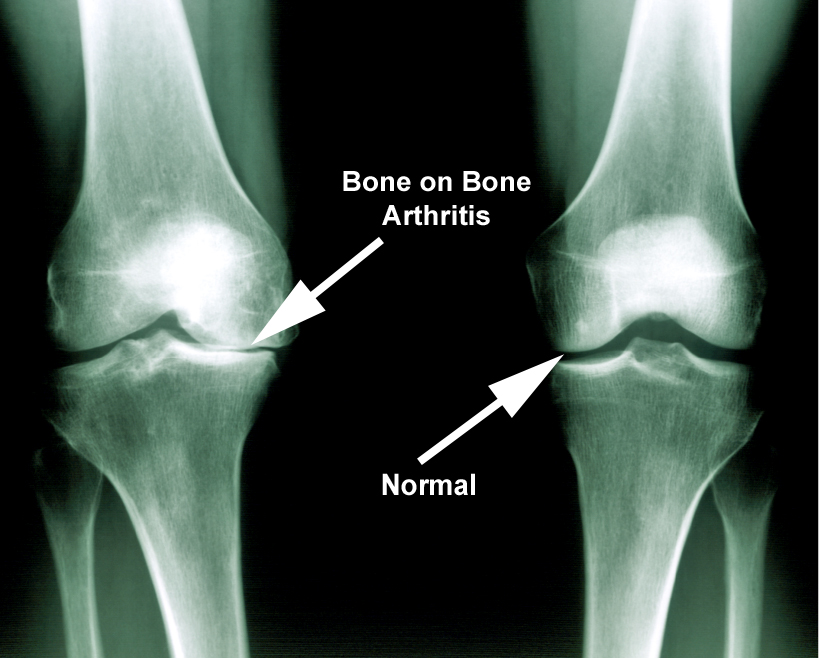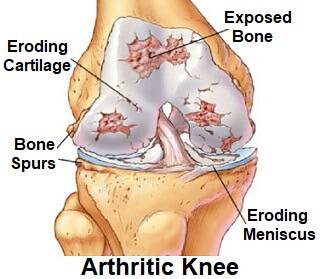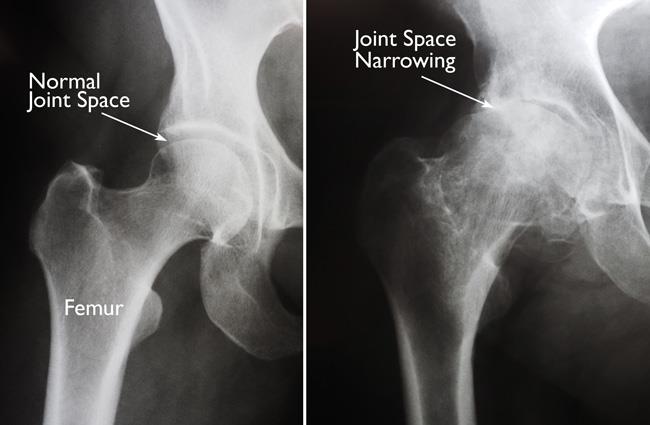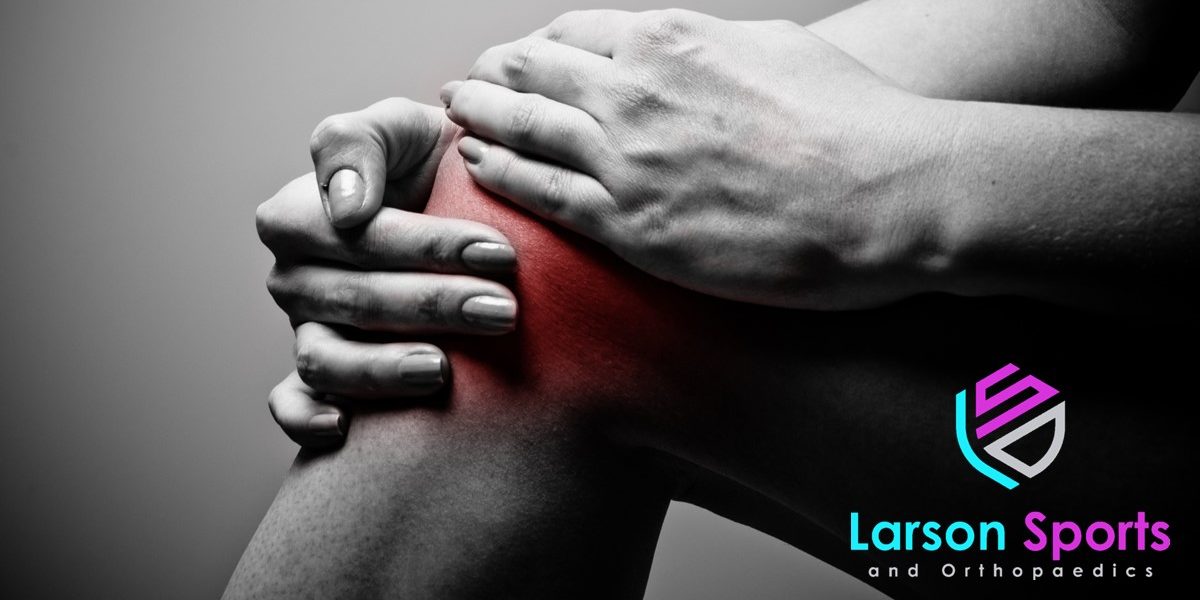Arthritis at its simplest is pain caused by the loss of cartilage within the joint. Hip and knee arthritis are some of the most common orthopedic problems in the world today. And this isn’t going away any time soon. The rates of hip and knee replacements due to arthritis are steadily rising. Along with this increased prevalence of arthritis comes many questions from patients: What is arthritis? Can arthritis be removed? What are the best treatments for arthritis? As an orthopedic surgeon, I get asked these questions a lot. So often in fact, that I thought I’d write this article to help all of you understand arthritis and how it affects your body!

What is Arthritis?
Arthritis is basically defined as the loss of cartilage that covers the ends of the bones in a joint. This is called osteoarthritis and it is due to the wear and tear of life or can be due to specific injuries. But it doesn’t stop there; there are many other problems that arise as a result of this cartilage loss. The more commonly used medical term for arthritis is “degenerative joint disease”. This is because it is a group of many different problems that develop as the joint wears out.
Some of the joint changes associated with arthritis include:
- loss of cartilage
- tears of the meniscus or labrum
- thickened joint lining tissue (called synovium)
- excess production of joint fluid (known as synovial fluid)
- bone spurs (called osteophytes)
- loose bodies ( bits of free-floating cartilage )
- increased inflammation
- production of destructive enzymes
- reactive bone edema (stress fractures)
- joint fluid bubbles outside the joint ( like Baker’s cysts )
As you can see, arthritis is a very complex process. It may start with a few minor injuries, but as it progresses it can be impossible to stop the process with anything short of a joint replacement. It’s a total failure of every part of your joint. Which is why going in and trying to fix just one thing is not a successful way to manage the problem.

Can You Remove Arthritis?
Many people ask if we can “go in and scrape out arthritis” However, the primary problem of arthritis is damage and loss of cartilage. “Scraping out” arthritis would be like trying to fix a hole in your yard by digging it out; you’ll only make the problem worse. Similarly, most of the symptoms associated with arthritis such as bone spurs and swelling or cysts are simply side effects and not the actual source of pain.
People ask if removing the bone spurs or cysts will help them feel better. Unfortunately, it doesn’t. If your knee was a house, arthritis would be best thought of as a house fire. Worrying about bone spurs and joint cysts would be like worrying about the fact that your couch was on fire too. Of course it is, the whole house is ablaze! Similarly, all of these other problems like spurs, meniscus tears, or Baker’s cysts are just one small part of the whole problem. Worrying about them in specific is missing the forest for the trees.
What Causes Arthritis?
Some unusual causes of arthritis include infection, fractures, traumatic injuries, or your body’s own immune system attacking the joint. But the most common cause is simple wear and tear that comes from everyday life; this is known as osteoarthritis. Obesity is also frequently a factor contributing to arthritis in our society. Arthritis typically begins as accumulated injuries to the cartilage, meniscus, or labrum.
What is cartilage?
Cartilage is the smooth tissue covering the ends of bones. You can see this as the white gristle on the end of chicken bones. Cartilage and the joint fluid within your joints work together to create a smooth, nearly frictionless surface in the joint. But wear and tear of the cartilage makes this a rough, pot-holed surface which induces further degeneration. Cartilage itself doesn’t heal very well and there isn’t much chance to repair it.
Can Cartilage Be Repaired?
Unfortunately, our options for treating cartilage damage are limited. If the damage is limited to a small area (typically between 1 and 2 cm in diameter ) then we have surgeries to repair or replace that damaged areas of cartilage. These surgeries work best in young patients isolated damage to the cartilage. But still, the cartilage that grows in the repair site is never quite as good as what you were born with.
But once the damage has gotten larger and your joint has gotten to “bone-on-bone arthritis” then you are past the point of no return. We don’t have any way to regrow cartilage over a wide area of the joint. Your only option at that point is a replacement.
Ways To Treat Arthritis
As I just said, our options to regrow cartilage are limited. And ultimately most people eventually get knee replacements. But surgically treating the side effects of arthritis (like bone spurs or meniscus tears) is not effective. However, there are definitely still good options for treating the pain from arthritis:
- oral anti-inflammatory pills
- steroid injections
- anti-inflammatory injections
- viscosupplementation (also called joint fluid replacement or “chicken comb” injections)
- exercise and physical therapy
- weight loss
- braces
These treatments are all relatively short term solutions. They may help for weeks or months. Some people find enough relief that they can avoid joint replacements for years with these methods. Others are not so lucky and need a replacement sooner.
Can I Exercise with Arthritis?
As always, I want to bring this back around to keeping you working out and healthy. And to many people, it seems counter-intuitive to recommend exercise for a problem that is thought to be caused by “wear and tear.” And yet, there are many reasons you should keep exercising even if you have arthritis.
First of all, you already have arthritis so the joint can’t get much worse. Secondly, exercise has been shown in many studies to decrease the pain and stiffness that comes from arthritis. Third, arthritis comes later in life, at a point where atrophy sets in quickly when you stop exercising. So you want to keep working out and maintaining your health despite having arthritis. And finally, strong, fit, healthy people recover much more quickly after a joint replacement. So if a replacement is in your future, you should be in your best shape possible to recover quickly afterward.

Does Fixing the Meniscus or Labrum Help Arthritis?
This is another dead-end. Once you already have full-blown arthritis, worrying about the meniscus or labrum is like worrying about having a flat tire after your car has been totaled. Tearing the labrum and meniscus usually happens as a normal course of arthritis. If you have true arthritis, then going after the meniscus or labrum tears is not effective.
Studies show that trimming out the torn meniscus is about as effective as doing a steroid injection. It’s really not worth the time, risk, or expense to scope an arthritic knee or hip. You are typically better off simply trying conservative measures like therapy or injections until they stop working. Then it’s time for a joint replacement.
This is the reason we don’t usually order an MRI when you have arthritis. We know you will have a lot of things wrong in the joint; the MRI won’t tell me as a surgeon anything new. And it won’t change the way we can treat the problem. There really isn’t much point to getting an expensive but ultimately useless test. So if you have arthritis already, skip the MRI unless your surgeon feels its needed for some other reason.

Do Stem Cells Help Regrow Cartilage?
This is a yes and no answer. First of all, I’ve seen absolutely no scientific literature showing that stem cell injection can regrow cartilage. The best we can say about a “shotgun” approach of injecting stem cells blindly into a joint is that they may help reduce pain from arthritis through an unknown mechanism. But despite what some unscrupulous stem cell clinics may say, there is no evidence showing that they can regrow cartilage when directly injected into the hip, knee, or bloodstream.
Now the story is different when stem cells are surgically implanted into sites of damage. Advanced cartilage restoration surgical techniques will often use stem cells from your own body in conjunction with absorbable biologic scaffolds to recreate the proper environment for new cartilage to grow in a small defect. But these techniques can’t fix true arthritis, only early-stage cartilage injuries.
While I think stem cells have a great role and great future in repairing cartilage injuries, simply squirting them into the joint and expecting them to know what to do is beyond their capacity.
Future Treatments For Arthritis
There are some new treatments that are just being explored for the treatment of arthritis. And while these are only now being investigated, I think they all have definite potential. But most of them are in the early stages of investigation. This means that we may not fully understand how they work, or the best way to use them. It also usually means that insurance won’t cover them and you’d have to pay out of pocket for them.
- Stem Cell Treatments
- Subchondroplasty
- Lipogems
- PRP – especially leukocyte-poor varieties (LP-PRP)
Ultimately, you should see an orthopedic surgeon to discuss your treatment options. If you live in the area of my clinic in Winchester, Virginia, you can contact my office to schedule an appointment here: Dr. Larson at Bone And Joint Specialists.

